Knee pain while exercising? Stop wrecking your knees and try these corrective exercises to retrain your body into perfect form.
If you have knee pain during or after an intense workout, you’re not alone. Knees are prone to injury since they’re involved in everything from playing sports, exercising, lifting weights and even just everyday life.
But the good news is that knee pain can be avoided. Below are common form mistakes that put the knees at risk, along with corrective exercises you can include in your routine to stop and prevent the pain from happening.
Suffering from a sore neck, back and shoulders? Get our mobility guide to ease pain and soreness.
Get The FREE Mobility Guide To Fix Your Pain Today!
Important note: Persistent knee pain could be a sign of something more serious. Although exercising with proper form is the best way to prevent knee injuries, some existing knee injuries may need more extensive physical therapy and/or medical treatment. Please consult your doctor if you do not feel relief even with corrected form.
6 Common Exercise Mistakes Wrecking Your Knees
These structural misalignments put too much pressure on the muscles and ligaments around the knee, putting you at a high risk for injury.
The following side-by-side photos will show you the contrast between injury-prone form versus safe form for common exercises that involve the knees.
In the section below, you’ll also find exercise to correct your form for each mistake.
Common Squat Mistakes
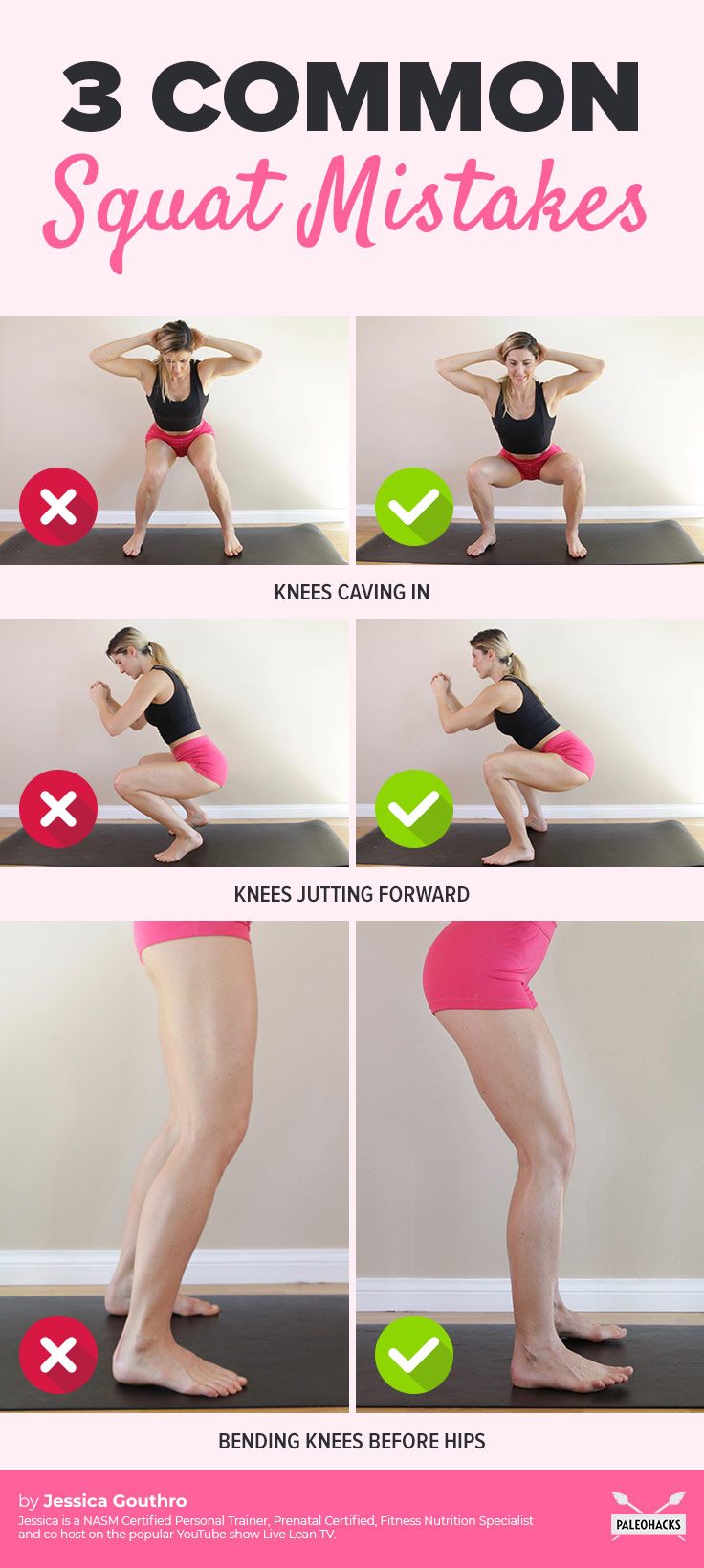
1. Knees Caving In
If your knees cave in towards each other during your squat, it can cause knee pain. Keep the knees pointing in the same direction as the toes to correct this. You can also try a slightly wider stance with toes pointed outwards to make it easier for your knees to point straight ahead.
2. Knees Jutting Forward
If your knees tend to jut out in a squat, you’re at an increased risk for strains and muscle tears. The majority of your weight should be shifted back during a squat to relieve the strain on the knees and help activate the muscles in the posterior chain (glutes and hamstrings). To correct this, shift your weight back so that your knees line up vertically and don’t pass beyond the toes.
3. Bending Knees Before Hips
One of the main reasons knees take on the grunt of the work in exercises like squats and lunges may be because the movement is initiated at the knees instead of at the hips. A simple shift of focus and changing the way you initiate your movements can help tremendously to prevent and alleviate knee pain.
Common Lunge Mistakes
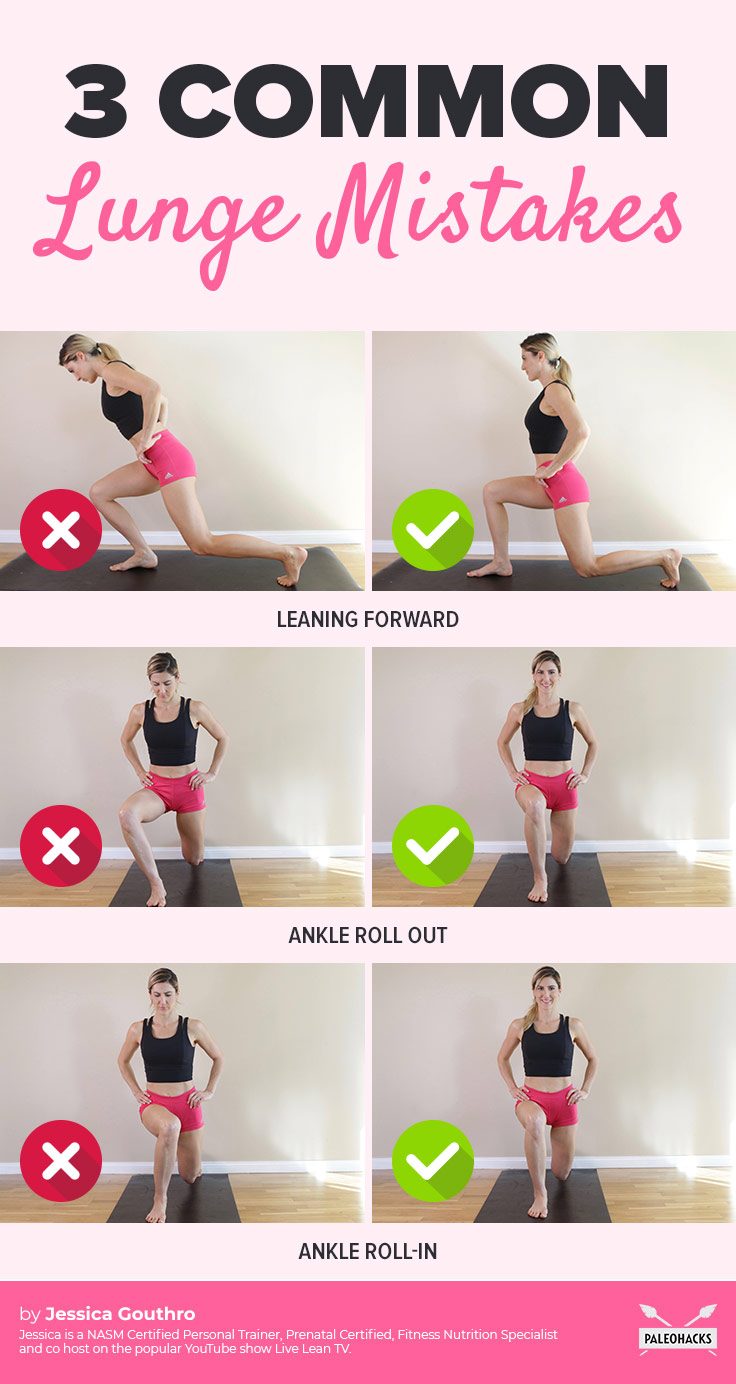
1. Leaning Forward
Putting too much pressure on the front leg during a lunge, including back, side, and walking lunges, can cause knee pain. Instead, your weight should be evenly distributed between both the front and the back leg. Make sure to press into the ground with the heel of your standing leg, no matter which lunge variation you are doing. Your front knee should always be aligned with the front heel, and your shoulders lined up directly over your hips.
2. Ankle Roll Out
Make sure not to overcompensate for a knee caving in by sending it too far to the outside. Remember, you want your knee pointing straight ahead and lined up directly over your heel.
3. Ankle Roll-in
This form mistake is more common among women, as their hips are built at a different angle than men’s. While a slight inward angle is healthy and natural, an exaggerated angle can cause problems and pain for the knees. Make sure that your knee is tracking straight out from your hip and in line with your toes.
Correctional Exercises For Knees Caving
Imaginary Stretch Band Squats | 5 reps
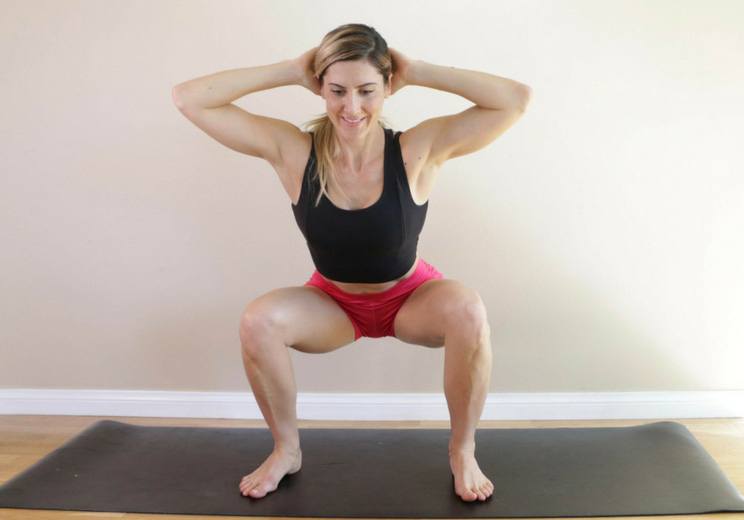
- Pretend there is a stretch band around your thighs as you do a squat. You can use a real stretch band to make it more challenging, but being able to do it without a band ensures that you train your mind and muscles to perform a straight squat every time, with no equipment needed.
- Focus on the idea of stretching the band apart as you get near the bottom of your squat.
- This exercise will help strengthen your outer thigh muscles and train your knees to track straight.
- Be careful not to stretch your knees too far apart; stop when they are lined up over your toes.
Squats in Front of Mirror | 10 reps
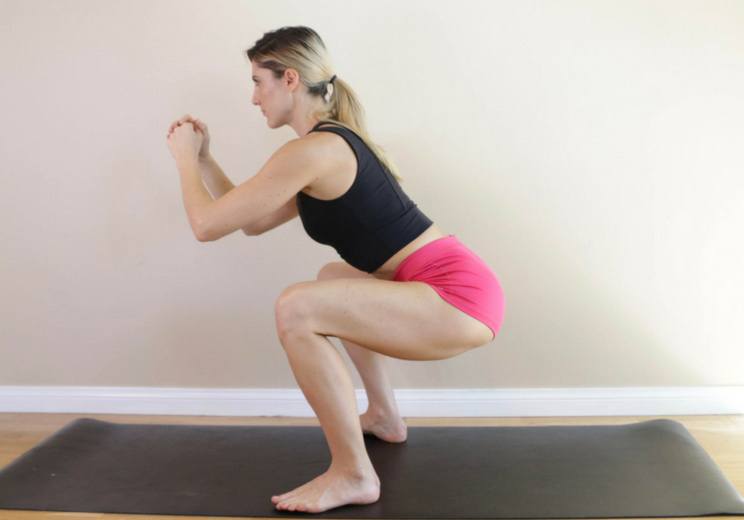
- Practice a stationary squat hold in front of a mirror, facing the mirror straight on.
- Look at your knees to confirm they are tracking straight towards your toes and lined up directly above your feet.
- Try holding the bottom position for 15-20 seconds, or as long as you can while maintaining that proper alignment.
- Only hold the squat for as long as you can with good form.
- If you notice your knees beginning to cave inwards, stand up and rest before starting again.
Correctional Exercises For Knees Jutting
Chair Tap Squats | 10 reps
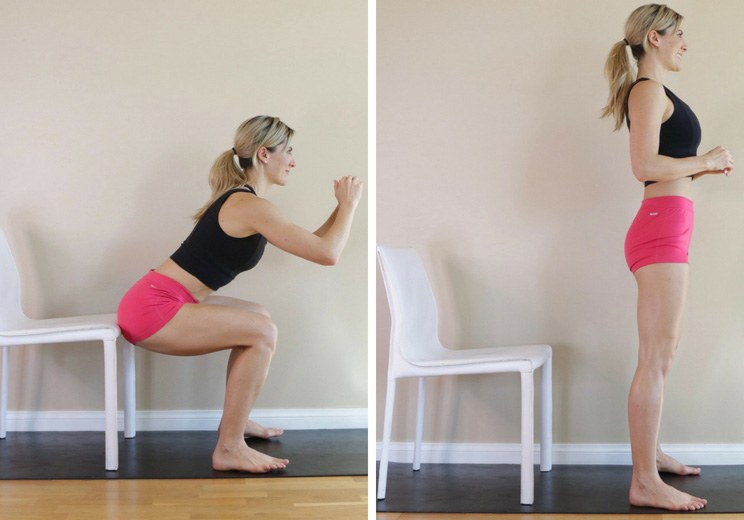
- Place a chair or bench 1-2 feet behind you when you squat.
- Reach your butt back to lightly tap the chair with each rep.
Wall Facing Squat | 5 reps
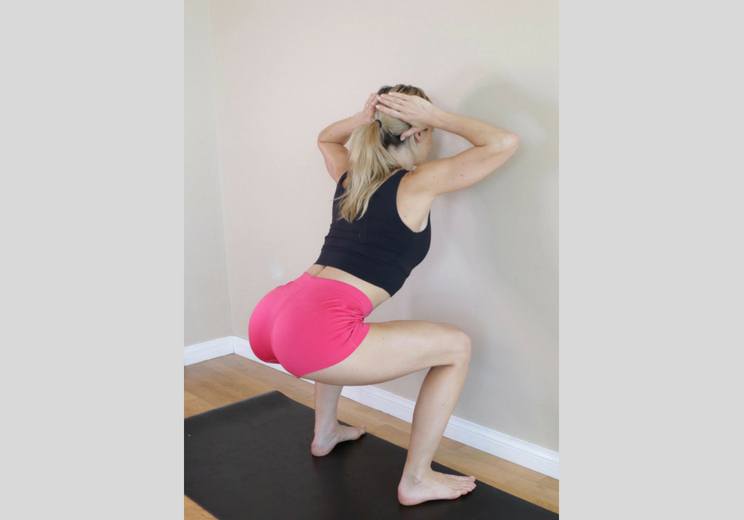
- Stand in front of a wall with your toes 3-5 inches away.
- Put your hands behind your head and squat down as low as you can.
- The wall will stop you from leaning forward, so you’ll be forced to stick your hips further back.
- Keep your head and chin up as you sit low.
- Practice a few reps like this, then try a longer squat hold as you get your hips and knees used to this position.
Towel Under Heels Squat | 10 reps
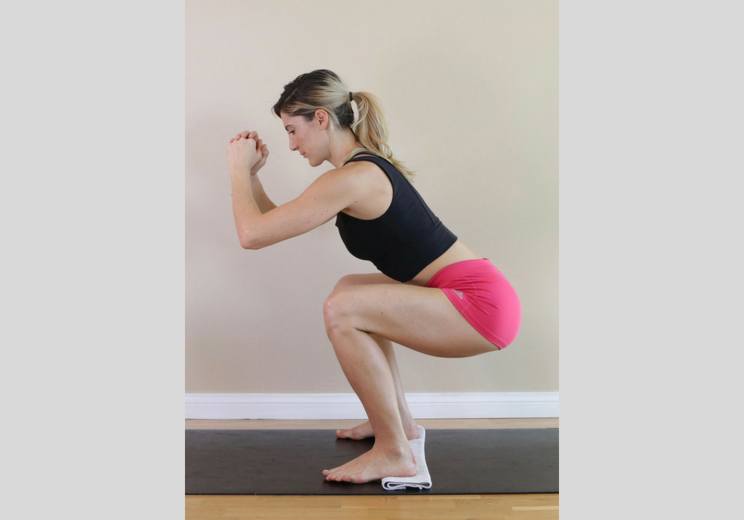
- Put a towel underneath your heels and press into the towel with your heels as you squat.
- Make sure that you’re putting so much pressure on the towel it would be impossible to pull it out from underneath you.
- You should also be able to lift and wiggle your toes at the bottom of each squat.
- This exercise will help you learn to sit back into your squats and maintain the majority of the pressure on your heels.
Correctional Exercises For Initiating With Knees
Tips:
- Whenever performing any exercise, whether it be squats, lunges, jumps or running, bring your awareness to the origin of your movement.
- Be more cognizant of which joint is bending first when initiating movement.
- Notice if you feel more pressure in your toes than in your heels.
- It might take some intense awareness to form a new habitual pattern, but the more you practice, and the more aware you become, the easier it will get.
3-Part Squats | 10 reps
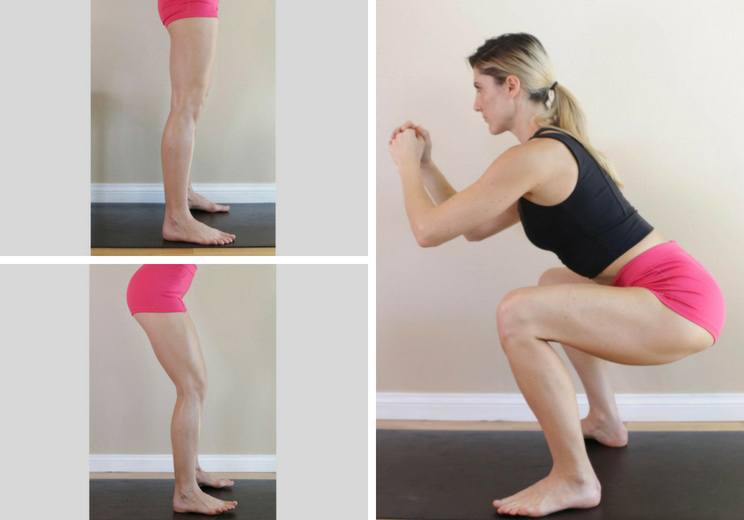
Mentally break your squat into 3 parts:
- Part 1: Before bending at any joint, simply shift your weight back onto your heels.
- Part 2: Bend at the hips with only a slight bend at the knees. Stick your hips back as far as they can go without losing your balance.
- Part 3: Bend at the knees to get all the way down into the squat. If you think about each rep in terms of 3 separate steps, you will correct the shift of your weight, take a lot of pressure off of your knees, and likely reduce the chance of knee pain.
Correctional Exercises For Lunge Form
Reverse Lunges | 5 reps per side
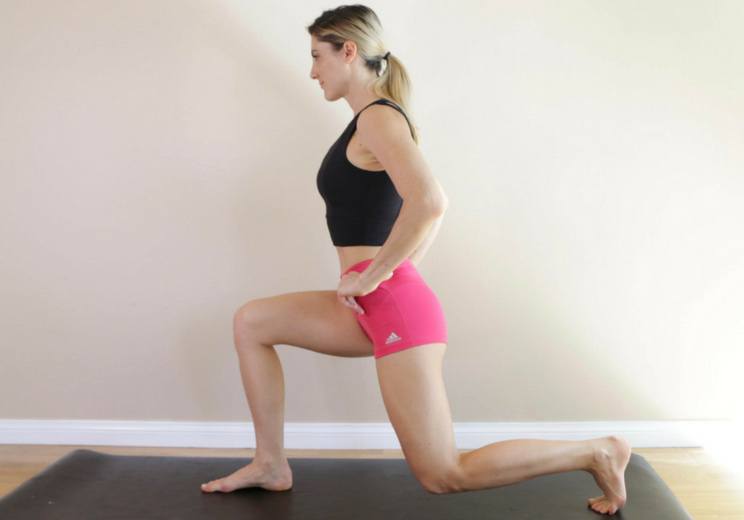
- Practice lunges next to a mirror, facing your side to the mirror.
- Check with each rep that your front knee is lined up directly over your heel and you see a 90-degree angle at your knee.
- Move slowly so you can assure each rep is done with good form.
- If you notice your knee start to drift forward, shift back and put more pressure on the heel instead of the ball of your foot.
- You should be able to distribute your weight evenly between your two legs instead of only in the front leg.
Reverse Lunges with Chair Barrier | 5 reps per side
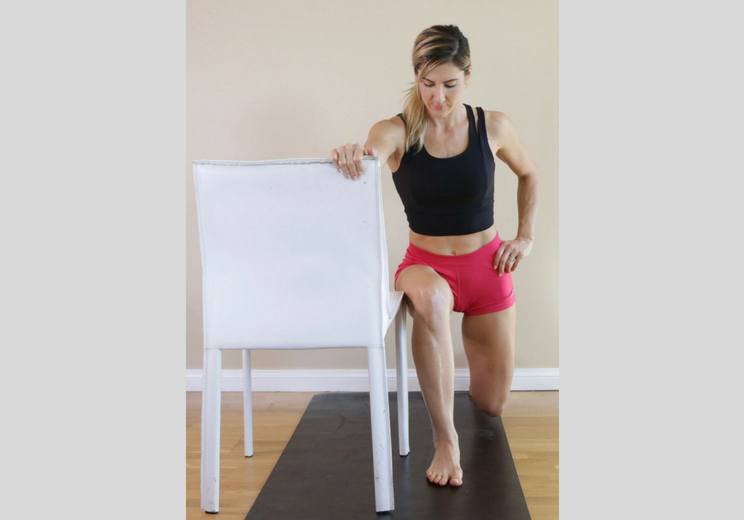
- Stand next to a chair with the outside of your knee lined up with the edge of a bench or chair.
- Take a step back with your other leg to get down into a lunge position.
- Feel free to use one hand on the chair to assist with balance.
- Do not allow your knee to touch the chair.
- Having this barrier to the side will help guide your knee and ankle straight and avoid ankle supination.
Forward Lunges with Chair Barrier | 5 reps per side
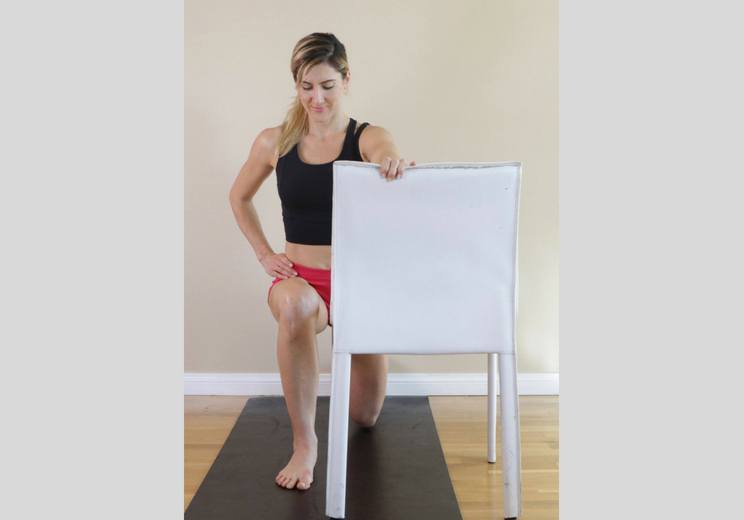
- Stand behind a chair with about 3 feet between you and the chair.
- Line yourself up so that the inside of your knee is lined up with the edge of the chair.
- Take a step forward and down into lunge position.
- Feel free to use one hand on the chair to assist with balance.
- Do not allow your knee to touch the chair.
- Having this barrier to the inside will help guide your knee and ankle straight and avoid ankle pronation.
Stationary Lunge Arch Lifts | 5 reps per side
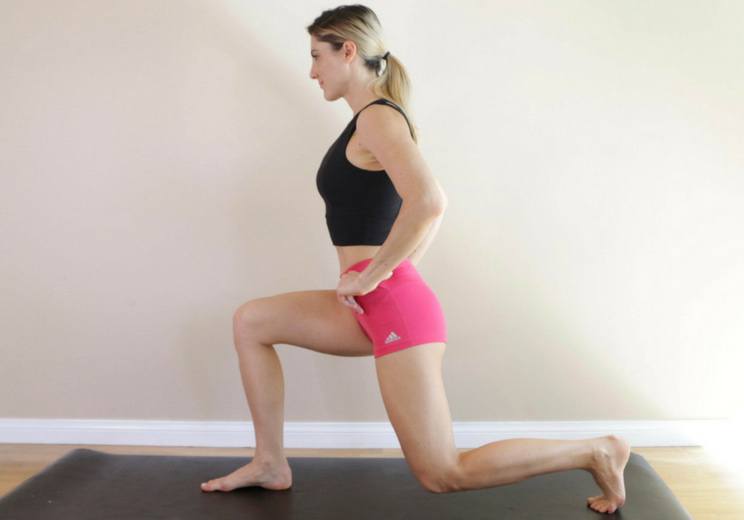
- Hold a stationary lunge with your front knee in a 90-degree bend.
- Lift the arch of your foot without allowing your knee to shift.
- It may help to practice your lunges barefoot or in socks so you can gain better awareness of what’s going on with your arches.
- Continue to lift and relax your arches for 5 or 10 reps or as many as you can do without needing a break from the lunge.
- Switch sides and repeat.
Bottom Line
When working towards correcting your form in any of these ways, be patient with the process and only do as much as you can without pain.
If you still feel knee pain while performing these exercises correctly, it may be a good idea to get a professional evaluation to determine if you have an existing tear, strain or injury of any sort.
Choose your corrective exercises based on the problems you feel are causing you the most knee pain and incorporate them into your workout routine 2-3x per week.
It takes time and patience to train your body with correct form, but it is well worth the investment to be able to exercise pain-free for the rest of your life.
(Your Next Workout: 1-Minute Mobility Hacks For 10 Different Pains)


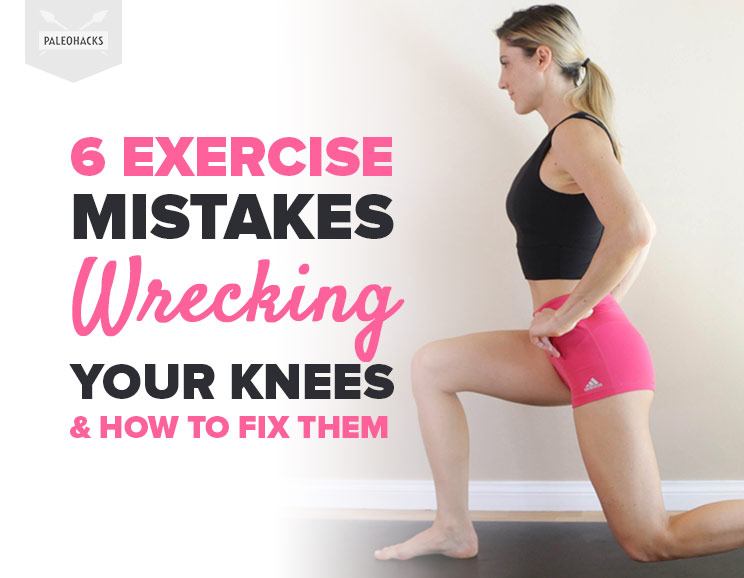
 Dark Chocolate Cranberry ‘Oat’ Cookies (No Baking Required!)
Dark Chocolate Cranberry ‘Oat’ Cookies (No Baking Required!)
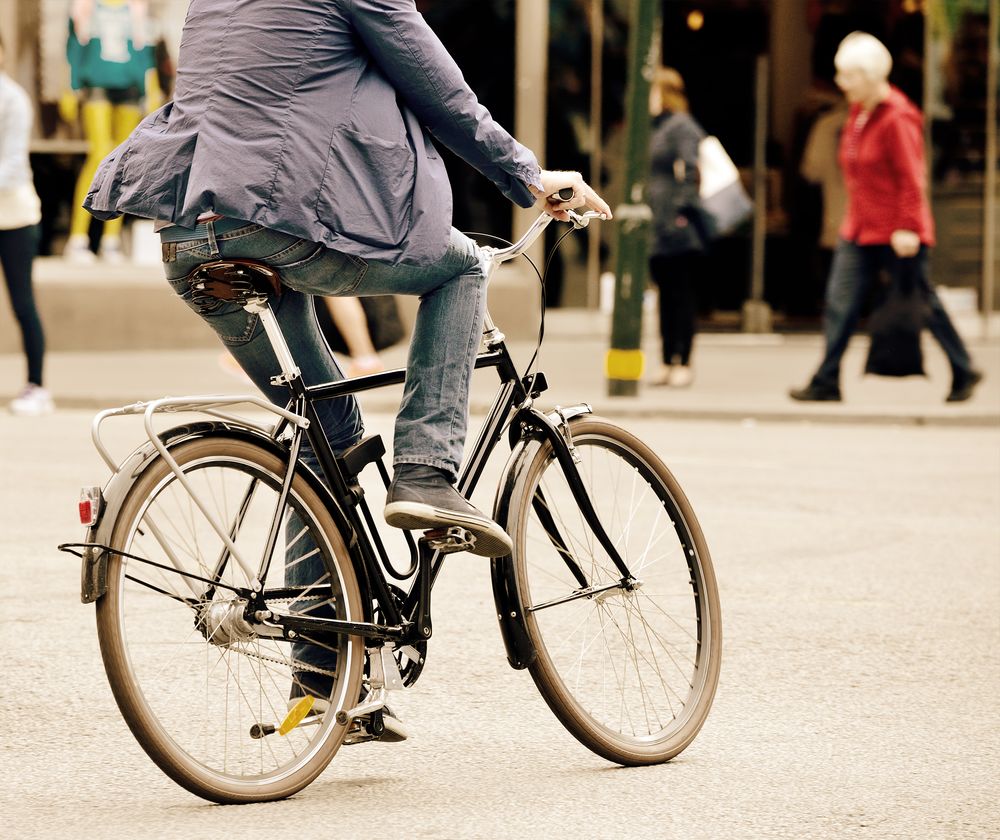
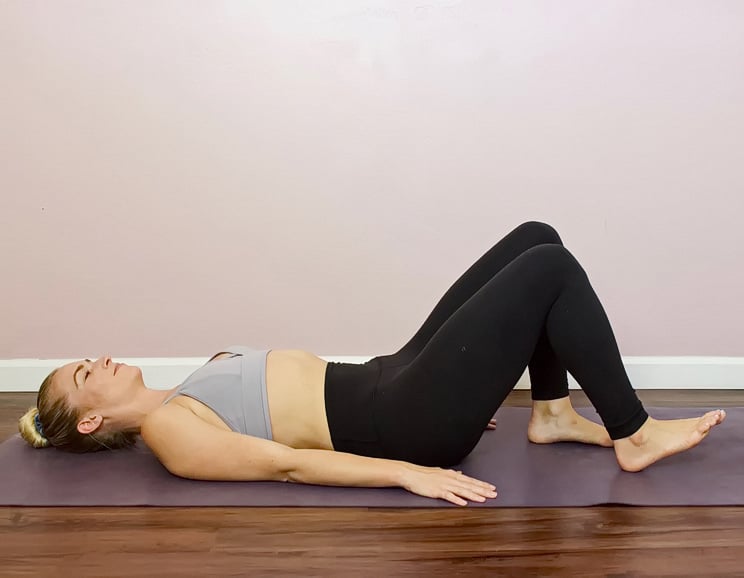
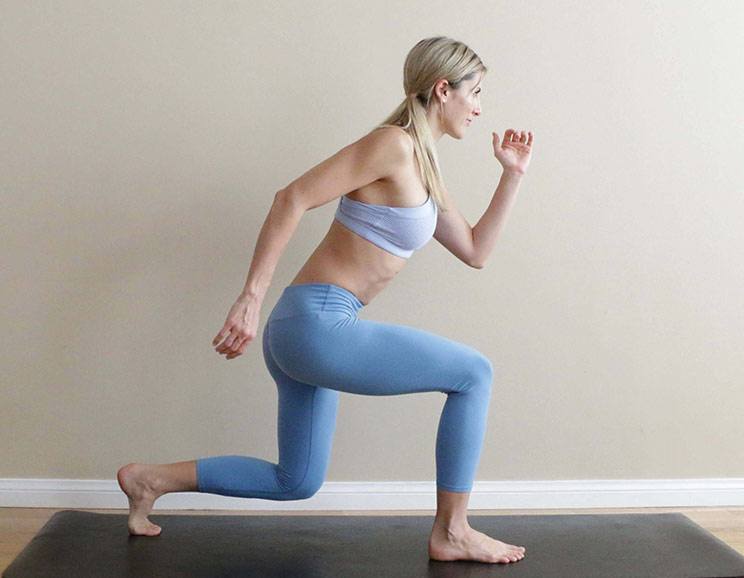



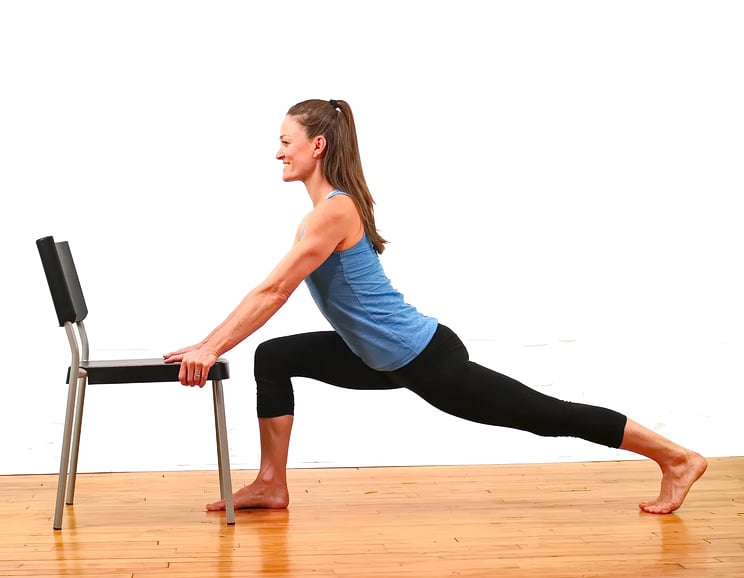
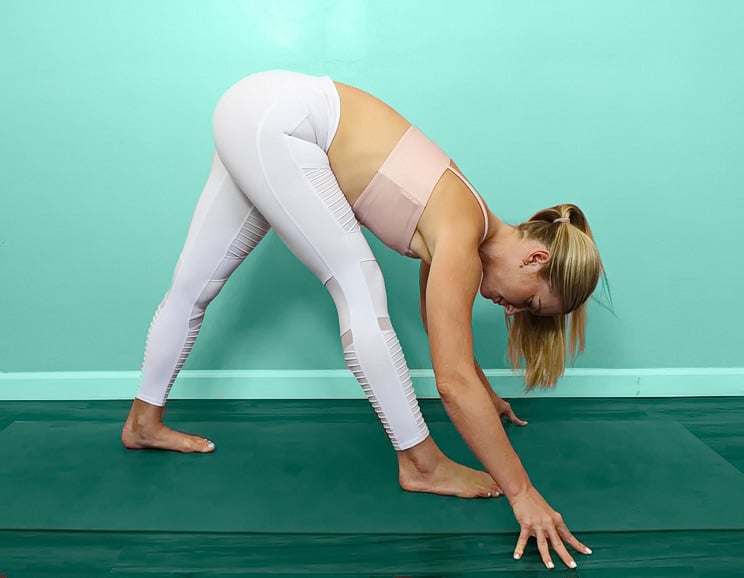
Show Comments